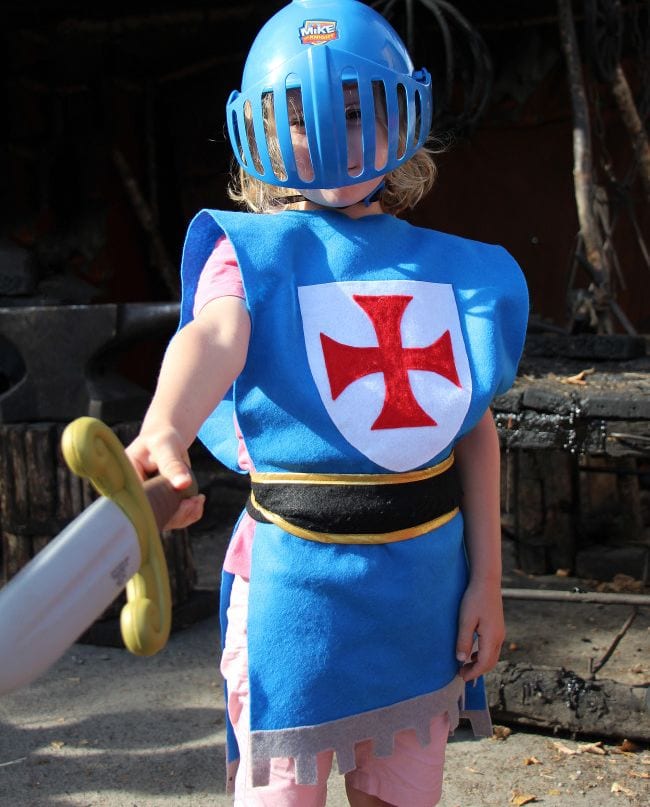Large pieces of fabric (e.g., felt, fleece, or any sturdy fabric that doesn’t fray)
Scissors
Fabric markers or paint (for decoration, optional)
Velcro strips or fabric glue
Ruler or measuring tape
Markers or crayons (for designing patterns, optional)
Preparation:
Discuss medieval knights and their attire. Show examples or images of knight tunics to inspire students.
Measure and Cut Fabric:
Measurements: Use a ruler or measuring tape to measure the length from the shoulders to where the tunic should end (e.g., knee length).
Cutting: Cut a large rectangle of fabric based on the measurements. Ensure it’s wide enough to fit comfortably over the student’s head and arms.
Create Armholes:
Fold the fabric in half lengthwise.
Cut out two armholes on the folded edge. Make sure they are large enough for the student’s arms to fit through comfortably.
Decorate the Tunic:
Use fabric markers or paint to add designs, such as a knight’s emblem, shields, or other medieval motifs. Allow any paint to dry completely before moving on to the next step.
Assemble the Tunic:
If using fabric glue, apply it along the sides of the tunic to form the sides of the garment. If using Velcro strips, attach them to the sides to secure the tunic in place. Ensure the Velcro is positioned so it’s easy to fasten and unfasten.
Final Touches:
Try on the tunic to ensure a good fit. Make any necessary adjustments.
Allow any glue or paint to dry completely before using the tunic for dress-up play.
Reflect and Play:
Have students try on their knight tunics and engage in imaginative play. Discuss what they learned about medieval clothing and how it compares to modern attire.

